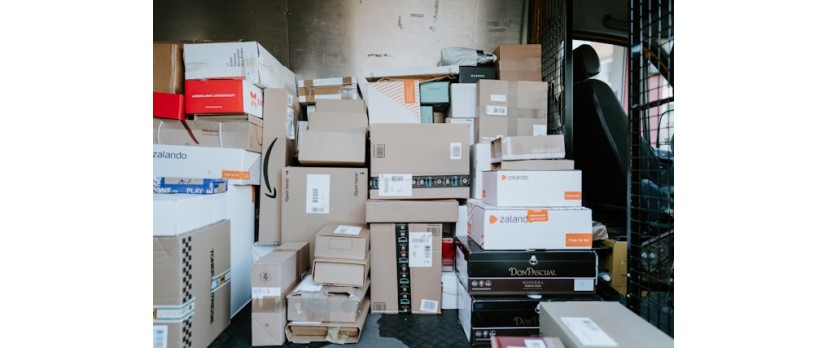The e-commerce delivery business model is a multi-billion dollar industry, with packages crisscrossing neighborhoods at unprecedented volumes. Behind this convenience lies a complex web of liability risks that can devastate unprepared sellers. When delivery accidents occur the financial and reputational fallout can reach far beyond the immediate incident.
Common Types of Delivery Accidents
Delivery drivers navigate congested streets, tight deadlines, and unfamiliar routes daily. Vehicle accidents involving delivery personnel can trigger liability claims against e-commerce sellers, particularly when drivers are rushing to meet delivery commitments. These incidents range from minor fender-benders to serious collisions causing property damage or personal injury.
Heavy packages pose injury risk when falling, delivery personnel can be injured while lifting oversized items, or customers can be hurt by improperly secured cargo, which creates direct liability exposure. Package-related injuries often involve questions about proper handling procedures, weight limitations, and packaging standards that sellers may have overlooked.
Third-party logistics providers introduce additional complexity to liability scenarios. When independent contractors or courier services cause accidents while delivering you products, determining responsibility becomes murky. These situations can involve slip-and-fall incidents, property damage during delivery attempts, or injuries to third parties during transit.
Legal Responsibilities of E-Commerce Sellers
The distinction between seller and courier liability depends on several factors: employment relationships, delivery arrangements, and contractual agreements. Independent contractors typically assume primary liability, while employees create direct employer responsibility. However, sellers may still face secondary liability claims regardless of courier status.
Product liability extends beyond manufacturing defects to include packaging, labeling, and delivery-related injuries. Sellers must also consider whether inadequate packaging contributed to accidents, if warning labels were sufficient, or whether product design created delivery hazards.
Most e-commerce sellers need multiple insurance layers: general liability, product liability, and potentially commercial auto coverage. Understanding coverage gaps between your policies and courier insurance prevents costly surprises when accidents occur.
Steps to Minimize Liability Risks
Proactive risk management requires systematic approaches across multiple business areas. Various operational risk reduction measures can be implemented:
Weight and size restriction for packages.
Clear delivery time expectations to reduce driver rushing.
Standardized packaging protocols with safety considerations.
Develop incident reporting procedures for all delivery-related events.
Thorough courier evaluation involves more than just a cost comparison. Examine insurance coverage levels, safety records, driver programs, and vehicle maintenance standards. Establish ongoing monitoring systems to track performance metrics and incident rates across all delivery partners.
Written policies protect both sellers and customers by setting clear expectations. Address delivery locations, package handling requirements, customer responsibilities, and procedures for failed delivery attempts. These policies must be easily accessible and regularly updated.
Comprehensive documentation serves as your first line of defense during liability disputes. Real-time tracking, delivery confirmations, and photographic evidence create clear accountability trails. Digital documentation systems enable quick access to critical information during legal proceedings.
Internal staff training ensures consistent application of safety protocols. Cover package preparation, courier coordination, incident response, and customer communication procedures. Regular training updates keep pace with evolving liability risks and regulatory requirements.
Responding Effectively After a Delivery Accident
Swift response minimizes harm and demonstrates responsible business practices. Prioritize medical assistance, secure accident scenes, and gather initial information without admitting fault. Document everything while memories and evidence remain fresh.
Honest communication builds trust during difficult situations. Provide regular updates, explain investigation processes, and address concerns promptly. Avoid speculation about fault while maintaining empathetic, professional interactions with affected customers.
Early consultation with legal and insurance professionals prevents costly mistakes. Should the accident involve a delivery motorcycle in Florida, a Fort Lauderdale motorcycle accident lawyer can guide evidence preservation, communication strategies, and claim management processes. Prompt notification to insurance carriers protects coverage and ensures proper claim handling.
Prompting Your Business Through Smart Risk Management
Managing delivery accident liability requires ongoing attention and systematic approaches. The costs of prevention pale in comparison to potential claims, legal fees, and reputational damage from unmanaged risks. Successful e-commerce sellers integrate liability management into their core business operations rather than treating it as an afterthought.
Start by evaluating your current exposure levels, review existing insurance coverage, and implement the protective measures outlined above. Your customers, employees, and bottom line will benefit from this proactive approach to delivery risk management.



Login and write down your comment.
Login my OpenCart Account